|
|
ADDRESS DURING THE INAUGURATION OF THE INTERNATIONAL CONFERENCE ON PHYSICS EDUCATION ON 'PHYSICS EDUCATION IN 2005: FOCUSING ON CHANGE' AT NEW DELHI
22-08-2005 : New Delhi
Injecting beauty of Science in teaching
I am indeed delighted to inaugurate the International Conference on Physics Education titled "World view on Physics Education in 2005: Focusing on Change" organized by the University of Delhi in collaboration with International participants. I greet the organizers, eminent physicists, physics education researchers, educators, distinguished guests and the other participants in the Conference. I was very happy to read the book titled "One hundred reasons to be a scientist" brought out by the Abdus Salam International Centre for Theoretical Physics. I suggest that at least ten of the personalities who have childhood experience in science can be brought out as a booklet for introduction in school curriculum at 10 and 10+2 level. Keeping in mind the main theme of the Conference, I would like to discuss with you about: "Injecting Beauty of Science in teaching."
My experience with school students
During the last five years, I have met 600,000 students in all parts of the country in the age group of students between 10 to 17 years. I make it a point to answer at least 10 to 15 questions wherever I go, in addition I have answered thousands of questions through my website. I would like to illustrate the typical searching minds, particularly to the teachers, scientists, Education Planners so that you will know the ambient conditions of the Indian students while discussing about the "Physics Education: focusing on change".
Question on Gravity: On 20th August 2005, I went to Bangalore and participated in the inauguration of Silver Jubilee of Karnataka Rajya Vijnana Parishat. The function was attended by children of 12 different Bangalore schools. After my address, some of the children asked very interesting scientific questions which I would like to share with this audience. Master Prajwal P. Acharya of 9th Standard, Prarthana School, asked me "What is the relationship between Time & Universal Gravitation?" I appreciated this beautiful question. In my answer I told him that the concept of time, space and universal gravitation is a very exciting and interesting one. "Gravity is the force of attraction between massive particles due to their mass. Weight is determined by the mass of an object and its location in a gravitational field. While a great deal is known about the properties of gravity, the ultimate cause of the gravitational force remains an open question. General relativity is the most successful theory of gravitation to date. It postulates that mass and energy curve, space-time, resulting in the phenomenon known as gravity." There are books on the subject and websites that explain these concepts extremely well. I asked the students to study further.
Question on Ocean exploration: Master Bharath Choudhari M. - 10th Standard, Athena Public School, asked me "Why we are not exploring the World (Ocean) more than the Universe (Space)?" In my answer I told him that Ocean is restricted to the surface of the earth whereas the space is unlimited. The reaching the depth of the ocean is becoming tougher than reaching large heights in the space. In spite of the difficulty in reaching the depth of the ocean, we still explore the ocean and many benefits accrue to the mankind. And there are many treasures of knowledge waiting from the depth of the ocean.
Question on Science and Philosophy: Another student from the audience asked "What is the difference between a Scientist and a Philosopher". For this question, I answered ? the thinking process is common both to the philosopher and the scientist. Scientist deals with theory which has to be validated. Philosopher postulates theological, philosophical and spiritual thoughts, the validation seams to be the societal dynamics. The science ultimately results in to technology and benefit the society. Philosophy, may give the way life is to be led in a dynamic society.
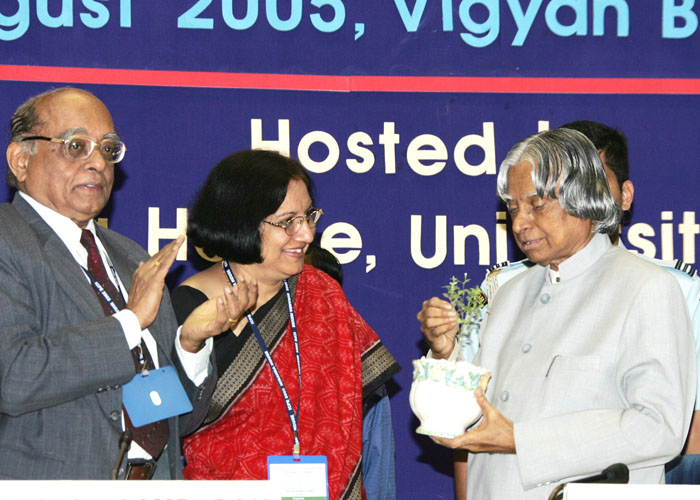
Question on Deep Impact on the Comet: I received an email from a 15 years old school boy from a north eastern state school on 5-July-2005, the day after the event "Mr. Kalam please tell me how important the Deep Impact spacecraft impacting on the comet Tempel-1? I was very happy to receive this question, even though I know the event I didn?t give thoughts. Then immediately I have to give an answer, I have searched the information in many websites and then sent the following answer.
"A few days back one important event took place in space. That was the impact of the NASA spacecraft called deep impact smashing into the comet Tempel-I, with enough force to create football stadium sized crater with a depth of a 14 storey building. The spacecraft was navigated by an Indian Shyam Bhaskaran ? the deep impact traveled 431 million kms in 172 days escaping from the earth orbit and intercepted the comet at a straight distance from earth at 134 million km. The comet was orbiting around the Sun every five and half years. This is a land mark in space exploration.
This event is important to divert in case of asteroids which may hit the earth in future. One such large asteroid 1950 AD is expected to hit the earth on March 16, 2880 AD. Like the "Deep Impact" many spacecrafts are required to be sent with high energy material to divert or break the asteroid to move it out of the earth orbit."
Still the boy was not satisfied, he again sent an email by asking what is the probability of hitting the earth? The email correspondence is continuing.
What are the messages emanating out these four questions? I am giving these queries from the young and my interaction, to all of you so that the experienced scientists and teachers should welcome such questions during the classes or during the interaction while they are giving the lectures elsewhere. Particularly few students between the age 14 and 17, it is very important to inject the beauty of science, challenge of science and bliss of science when one achieves. This is the period the students make up their mind, whether they should go far science, engineering, medical, bio, law or humanities.
Saturday, I was in the campus of Indian Institute of Science, Bangalore for felicitating Prof. CNR Rao, a solid state chemist and pioneer in India on Nano Science, by scientific community at Bangalore. Prof. CNR Rao in his acceptance remarks said "The working in science itself is the greatest award a scientist can dream of". This thought is reflected in his biography "Science as a way of life".
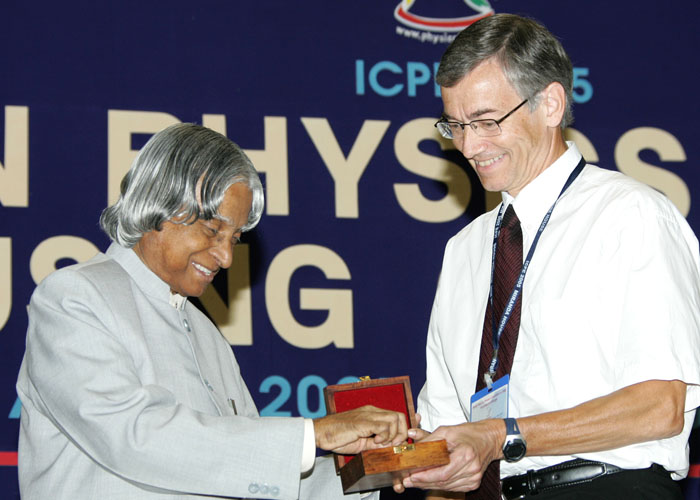

Propagate the probing of scientific minds
A. Towards Raman Effect:
Why is the sea blue? The view has been expressed that the dark blue of the deep sea has nothing to do with the color of water. It is simply the blue of the sky seen by reflection. Sir CV Raman then questions this view describing his own experiment on board the ship: Observations made in this way in the deeper waters of Mediterranean and Red sea showed that the color so far, from being impoverished by suppression of sky reflection was wonderfully improved here by. It was abundantly clear from the observation that the blue color of the deep sea is a distinct phenomenon itself and not merely an effect due to reflected sky light. Later Raman draws attention to the connection between the color of deep waters and the Einstein Smoluchowski formula. Naturally he starts with that the sky is blue because of scattering of light by the molecules in the upper atmosphere. The color of the sea is a different matter. Rayleigh believes it was all due to reflection, but Raman gives an entirely different view, that in this phenomenon, as in the parallel case of the color of sky, molecular diffraction determines the observed luminosity and in great measure also its color. Hence the birth of the Raman Effect.
Now let us study how great scientists in their school days got shape for science. First let us take up the example of Albert Einstein.

B. Teachers influence
In Albert Einstein life, we find that his interest in science started early, beginning with his encounter with magnetism, which he called "the first miracle". He was given a compass by his father and Einstein was endlessly fascinated by the fact that invisible forces could make object move. This experience made a lasting impression on him. His interest in compasses was reinforced when he found a caring mentor to hone his ideas. At the age of 12, he experienced second wonder in a little book given by his mentor Max Talmud with Euclidean plain Geometry which he called "Holy Geometry Book". Einstein called this his "second miracle". Here Einstein made contact with the realm of pure thought. Without expensive laboratories or equipment, he could explore universal truth, limited only by the power of human mind. Mathematics became an endless source of pleasure to Einstein especially if intriguing puzzle and mysteries were involved.
Visualizing pictures: Einstein's father was in an electro chemical business. Being in the midst of electro magnetic contraptions awakened an intuitive understanding of electricity and magnetism in Albert Einstein. It sharpens his ability to develop graphic, physical pictures that would describe the laws of nature with uncanny accuracy. This trait, the ability to see everything in terms of physical pictures, would mark one of Einstein's great characteristics as a physicist.
Freedom to Learn : Though born in Germany, Einstein moved to Zurich Polytechnic Institute in Switzerland. The entry into the polytechnic did not require a high school diploma, just a passing grade on its tough entrance examination was sufficient. Einstein failed in the entrance examination but he did exceptionally well in the Maths and Physics section. That impressed the Principal and he promised to take him during the following year without an entrance test. The message we get from this experience is about having a flexible system of admission. Also an ability to spot the aptitude of the student in a particular subject and nourishing the talents. In addition, Einstein enjoyed the liberal atmosphere of the Swiss school.
Simplicity in description: Unlike lesser scientists who often got lost in Mathematics, Einstein got in terms of simple physical picture ? speeding trains, falling elevators, rockets and moving clocks. These pictures would unerringly guide him through the greatest ideas of the twentieth century. He wrote "All physical theories, their mathematical expression notwithstanding, ought to lend themselves to so simple a description that even a child could understand". This is a very important message for all physics researchers and physics teachers. Here the birth of famous simple, elegant and very powerful energy equation E=MC2, which decided war and peace system of the world.
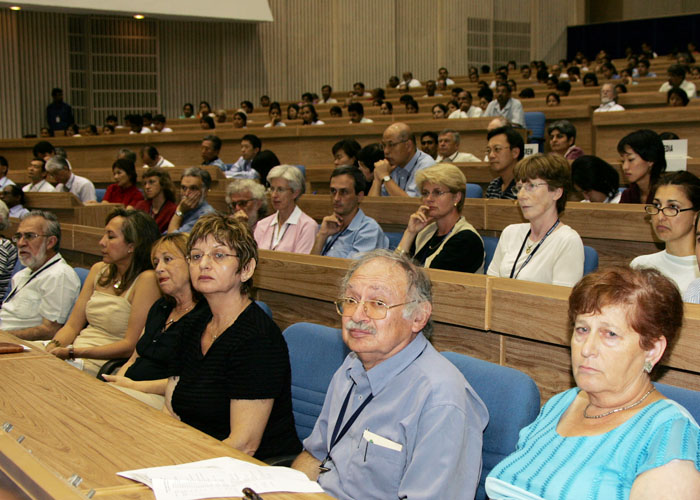
In the profession of teaching, teachers are indeed playing the role of creating the creative minds. Sir CV Raman's questioning why the sky is blue?-leading to Physics Nobel Prize, is indeed inspiring teaching material to the teachers. Similarly a message of spotting an outstanding talent in physics in spite of failing the school entrance, is another message comes how Swiss school spotted one of the greatest scientific minds in 20th century, Albert Einstein.
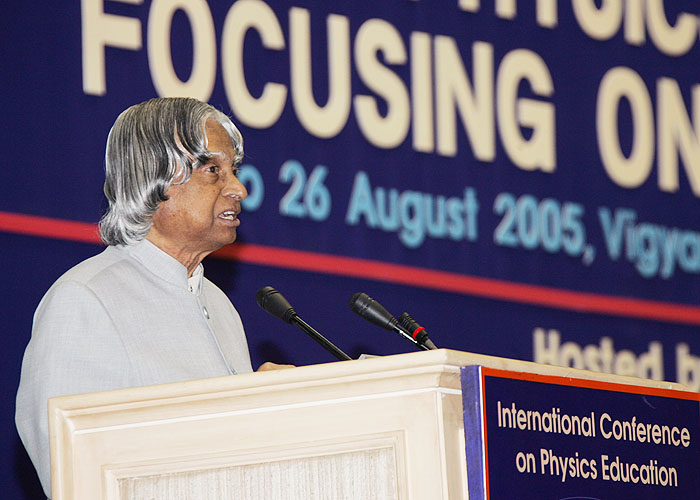

My teacher: Prof. Satish Dhawan
Now I would like to share with you one experience I had with my teacher Prof. Satish Dhawan. I joined Defence Research and Development Organisation (DRDO) in 1958 at Aeronautical Development Establishment at Bangalore. There I took up the development of Hovercraft. Hovercraft design needed the development of a ducted contra- rotating propeller for creating a smooth flow balancing the torques. I did not know how to design a contra-rotating propeller though I knew how to design a conventional propeller. Some of my friends told me that I can approach Prof. Satish Dhawan of Indian Institute of Science, who was well known for his aeronautical research, for help in designing the ducted contra-rotating propeller.
I took permission from my Director Dr. Mediratta and went to Prof. Satish Dhawan who was sitting in a small room in Indian Institute of Science with lot of books in the background and a blackboard on the wall. Prof. Satish Dhawan asked me what the problem was that I would like to discuss. I explained the problem to Prof. Dhawan about my project work. He told me that it is really a challenging task and he would teach me the design if I attend his classes in IISc between 2.00 p.m. to 3.00 p.m. on all Saturdays for the next Six weeks. He was a visionary teacher. He prepared the schedule for the entire course and wrote it on the black board. He also gave me the reference material and books I should read before I start attending the course. I considered this as a great opportunity and I started attending the discussion and started meeting him regularly. Before commencing each meeting, he would ask critical questions and assess my understanding of the subject. That was for the first time that I realized how a good teacher prepares himself for teaching with meticulous planning and prepares the student for acquisition of knowledge. This process continued for the next six weeks. I got the capability for designing the contra-rotating propeller. Prof. Dhawan told me that I am ready for developing the contra-rotating propeller for a given hovercraft configuration. That was the time I realized that Prof. Satish Dhawan was not only a teacher but also a fantastic development engineer of aeronautical systems.
Later during the critical phases of testing Professor Dhawan was with me to witness the test and find solutions to the problems. After reaching the smooth test phase, contra-rotating propeller went through 50 hours of continuous testing. Prof. Satish Dhawan witnessed the test himself and congratulated me. That was a great day for me when I saw the contra rotating propeller designed by my team performing to the mission requirement in the hovercraft. However, at that time, I did not realize that Prof. Satish Dhawan would become Chairman, ISRO and that I would get the opportunity to work with him as a Project Director in the development of satellite launch vehicle SLV-3 for injecting the Rohini Satellite into the orbit. Nature has its own way to link the student?s dream and the real life later.
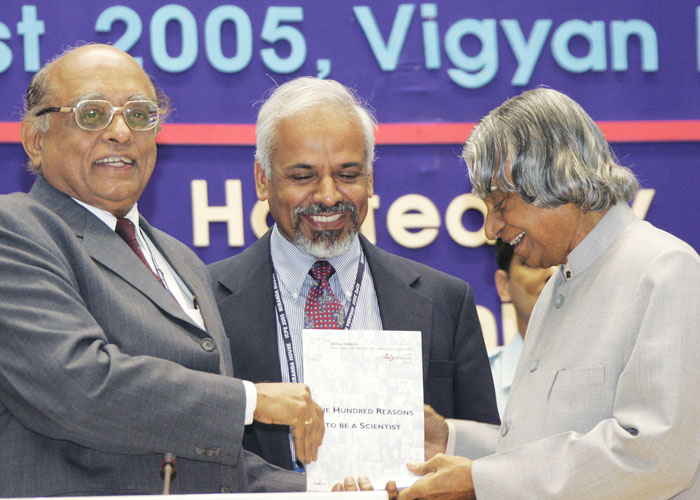

Conclusion
Physics is a fascinating subject. Mastery in physics needs understanding of mathematics. Mathematics in combination with science shines. What is needed is confronting theory with experimentation. For enabling the student to capture the thought, the student should be motivated to visualize and imagine the phenomenon as done by Einstein who reasoned that if you could run along side a light beam then the light beam should be perfectly at rest. This means that the light beam as seen by the runner would look like a frozen wave, a still photographer away. Learning physics needs freedom to think and freedom to imagine. Both have to be provided by our education system. Teachers have to become capacity builders and facilitators. They have to ask questions which are challenging and allow the student to think and come up with an answer. Teachers must also find answers to the questions asked by the students or at least the approach through which the student can find an answer. Eventually the teacher has to create a life long autonomous learner who will blossom into a physicist.
My best wishes to all the participants of this Conference and success in their mission of finding the new vistas in physics education.
May God bless you.
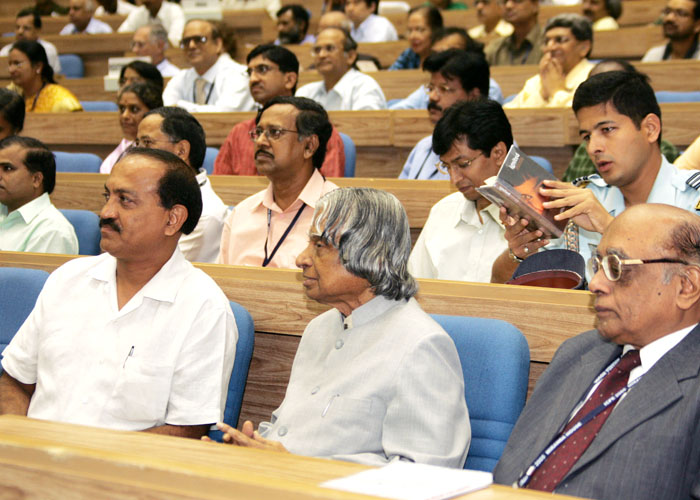
<<Back
|
|